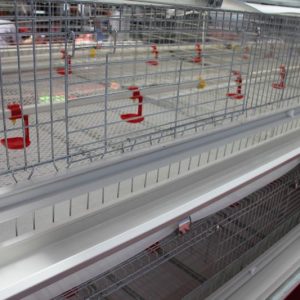The level of broiler production depends critically on the genetic potential of the chicken, and the degree of intrinsic potential performance is not only closely related to the suitability of the living environment, but also to the proper feeding management. At present, many breeders pay little attention to feeding management, which affects the growth and development of broilers, causes feed waste and reduces the feeding effect. Farmers should do a good job of feeding management from the following aspects to improve broiler feeding effects:
grasp the timing
After the chicks arrive in the chicken house, they should drink water for 2-3 hours, and wait until 1/3 of the chicks have pecking performance or 24-36 hours after they emerge. Too early or late is not good for the chicks. Premature feeding affects the absorption and utilization of egg yolk in the chicks, causing indigestion, which affects the growth and development of the chicks and the use of feed. In addition, premature feeding, chick activity and chicken manure will contaminate the feed and affect the health of the flock. Feeding too late will cause excessive consumption of the yolk in the chicks and weak physique, which will also affect the growth and survival rate of the chicks.
Provide adequate feeding positions
After 7 days of age, each chicken should have at least a 5 cm wide feeding position. As the age increases, the feeding position should gradually increase, reaching about 10 cm at 49 days of age. If the feeding position is not sufficient, it will affect some parts. The feed intake of chickens can easily cause uneven size of the flock.
Regularly adjust the height of the trough
As the age of broilers increases, the height of the trough should be adjusted regularly. The upper edge of the trough should be flush with the back of the chicken or 2 cm higher. Chickens do not have teeth or soft palate. When pecking feed and drinking water, they must raise their heads to enter. The feed trough is set properly to reduce feed overflow from the mouth and reduce feed waste.
Adjust the feeding frequency with the age
Feeding every 2 hours for 1-3 days of age, stop for 4-5 hours at night; gradually reduce the feeding frequency after 3 days of age, 6-8 times per day and night; 4-6 times in the later period. The digestive tract of the chicks is not well developed, has no teeth, small crocks, imperfect secretion of digestive enzymes, and poor digestion. Therefore, they should be fed less frequently at the beginning. As the age increases, the number of feedings gradually decreases.
control each feeding amount
It is not advisable to add too much each time, because chickens have poor digestibility and overeating can easily cause indigestion and affect the utilization rate of feed. The daily feed amount should be calculated reasonably and divided equally according to the number of feedings. Wait for the last time to add the ingredients, or wait for a while before adding the ingredients. Do not add the ingredients. Otherwise, it will easily cause indigestion, picky eaters, affect the growth and health of the chickens, and easily cause feed pollution.
Supply high-quality feed
Because broilers grow fast and their digestive functions are not very complete, it is necessary to provide a full-price compound feed that is easy to digest and has comprehensive nutrition. Broiler feeding is generally divided into three stages: 0-20 days of age is the brooding period, 21-38 days of age is the middle stage, and 39 days of age to slaughter is the late stage. Different feeds must be supplied according to the stage.
There is a transition period for refueling
During the breeding process, due to the different nutrients required at different stages, the raw materials sometimes change, and refueling is inevitable. Improper refueling will cause greater stress to broilers. Sudden change of feed may cause digestive disorders of chickens, cause indigestion, diarrhea, etc., and affect the growth and feed utilization of broilers. Practice has shown that if the feed change is carried out gradually, it will basically have no effect on broiler production. When changing the feed, it usually takes 5-7 days. The specific method is as follows: 2/3 of the previous feed (feed being used) + 1/3 of the next feed (feed to be replaced), use 2 days; Use 1/2 of the previous feed + 1/2 of the next feed for 2 days; use 1/3 of the previous feed + 2/3 of the next feed for 2 days, and then all change to the next feed.
Plus feeding health sand
The digestion of food by chickens is carried out by the strong contraction and crushing of the musculoskeletal stomach. Therefore, insoluble grit should be added to the chicken feed regularly to help digestion and improve feed utilization. Chicks can use rice-sized health sand at the beginning, and gradually increase in the future. Later, they can use sand with a diameter of 4-5 mm (the size of soybeans). The health sand can be mixed into the feed at a ratio of 0.3%, or it can be added once a week, and put it into the shallow dish once a week according to the required amount of the week, and the chickens can eat freely.
add probiotics
The contents of the chicken intestine are slightly acidic, which is conducive to the reproduction of beneficial microorganisms in the intestine. Regular addition of probiotics to the feed can increase the utilization rate of feed by 5%-8%; improve the body’s disease resistance and prevent the occurrence of some diseases; reduce the proportion of non-protein nitrogen in the feces, reduce the production of ammonia, and improve the chicken house Environment, reduce the occurrence of respiratory diseases and ascites.

